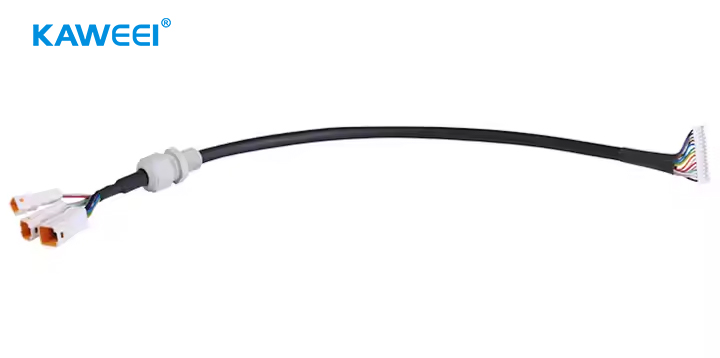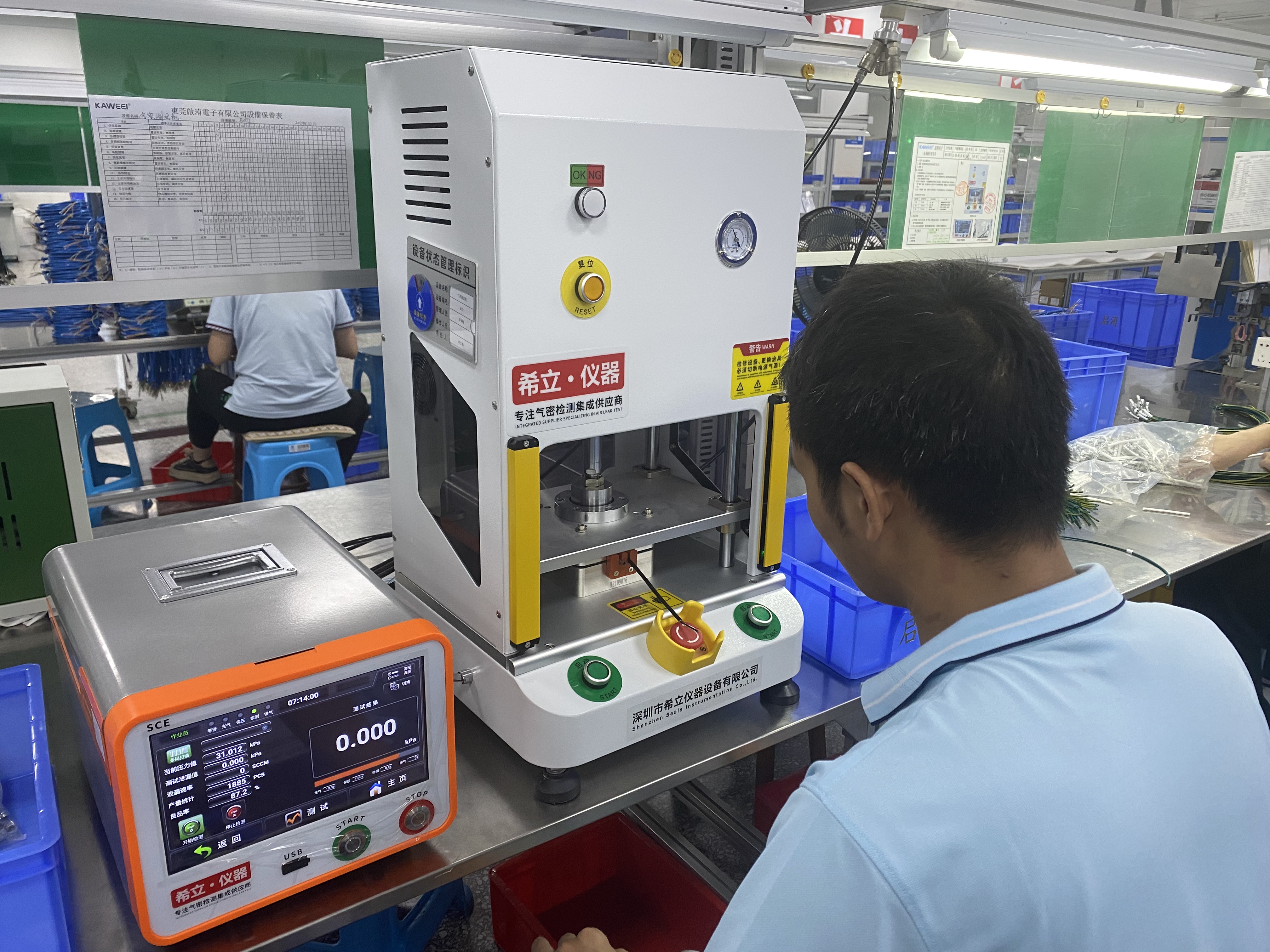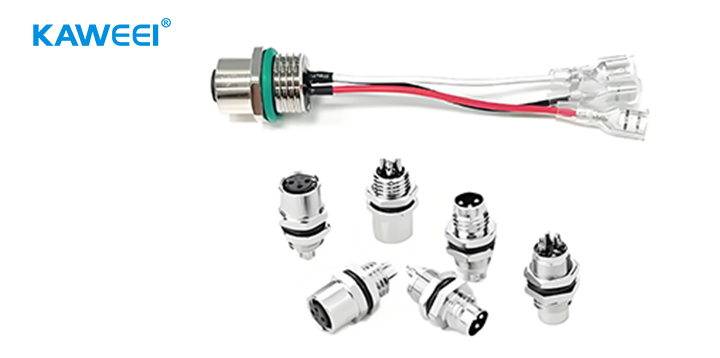Enhancing the Sealing Performance of Waterproof Wire Harnesses: Kaweei’s Expert Solutions
Water seepage problems in waterproof wire harnesses are often caused by detailed issues in aspects such as design, material selection, and processing techniques. By reasonably selecting connectors, matching wires, standardizing crimping processes, and using dual-wall heat-shrinkable tubes and waterproof sheaths, the sealing performance of waterproof wire harnesses can be effectively improved, and water seepage problems can be avoided.

Why do waterproof wire harnesses seep water?
PART.01 Improper selection of connectors
One of the main reasons for water seepage in waterproof wire harnesses is the use of inappropriate connectors. If the connector's protection level is insufficient or the sealing design is poor, the wire harness is prone to water seepage during use.
PART.02 Mismatch between connectors and wires
If the connectors and wires are not properly matched, for example, if the wire diameter is too thick or too thin, it will lead to poor contact and affect the sealing performance, thus increasing the risk of water seepage.
PART.03 Non-standard wire harness crimping process
Unqualified crimping processes can also lead to poor waterproof performance. For example, if the crimping is not firm and the terminals and wires have poor contact, it will become a "hidden danger" for water seepage.
PART.04 Siphon phenomenon
The siphon phenomenon refers to the phenomenon that water enters the wire harness through the wires, usually occurring at connection points or grounding points. This problem also needs special attention during design.
Next, let's take a look at how to reduce or avoid the occurrence of these problems through optimizing processing techniques and design.
Select appropriate waterproof connectors.
The waterproof effect of waterproof wire harnesses is closely related to the waterproof level of connectors. In a humid environment, the protection level of connectors should at least meet the IPX7 standard (that is, it can be immersed in water with a depth of 1 meter for 30 minutes without water ingress). If the working environment is harsher, higher-level connectors (such as IPX8) can be selected.
Tip: When selecting connectors, be sure to confirm whether the sealing rings of the connectors are intact. If the sealing rings are damaged, even high-waterproof-level connectors may cause water seepage.
Accurately match connectors and wire.s
The matching of connectors and wires is crucial. Especially when selecting the wire diameter, it must be strictly selected according to the specifications of the connectors. Using wires that are too thick or too thin may lead to poor sealing between the connectors and the wires, thus affecting the waterproof effect.
Tip: When selecting, pay attention to checking the specification manuals of the connectors, confirm the adaptation range of the wires used, and ensure that the wires and connectors can be tightly connected to avoid water seepage caused by improper matching.
Avoid double crimping and adopt single-wire insertion into waterproof connecto.rs
In some designs, two or more wires may need to enter a waterproof connector. At this time, adopting double crimping (that is, crimping two wires together) will often affect the sealing performance of the connector and lead to water seepage problems. The best practice is to change double crimping to single-wire insertion into the connector to ensure that each wire can be sealed independently.
Tip: If multiple wire harnesses need to pass through the connector, appropriate joints or shells can be designed to ensure that each wire enters independently and good sealing measures are taken.
Prevent the siphon phenomenon and use dual-wall heat-shrinkable tubes
The siphon phenomenon is a common problem in waterproof wire harnesses, especially at connection points and grounding points. At this time, moisture can enter the wire harness along the path of the wires through the "siphon" effect. To solve this problem, dual-wall heat-shrinkable tubes can be used for sealing.
Skills for using dual-wall heat-shrinkable tubes:
At the positions of connection points and grounding points, ensure that the heat-shrinkable tubes completely cover the copper wires and are tightly attached to the wires and terminals.
The adhesive surface of the heat-shrinkable tubes can further enhance the sealing effect and prevent moisture from seeping in.
When shrinking, ensure that the heat-shrinkable tubes are shrunk evenly without bubbles or voids to avoid water leakage points.
Skills for using heat-shrinkable tubes
Heat-shrinkable tubes are widely used in waterproof wire harnesses, especially in preventing water seepage and improving sealing performance. When using heat-shrinkable tubes, the following aspects should be paid special attention to:
Select appropriate heat-shrinkable tubes: The inner diameter of the heat-shrinkable tubes and the outer diameter of the wires need to be matched to ensure that the wire skins can be completely wrapped after shrinking.
Reasonably arrange the shrinking positions of heat-shrinkable tubes: At least 1 centimeter of length should be reserved at both ends of the heat-shrinkable tubes to ensure tight wrapping and sealing in place.
Heat evenly: When using a hot air gun or other heating equipment, ensure that the heat-shrinkable tubes are heated evenly and will not be shrunk incompletely or melted due to improper heating.
Best solution

We can use the SAIMR3115B airtightness tester to conduct airtightness tests on products or fixtures, etc., and test the airtightness of products in advance to check whether they are qualified.
The SAIMR3115B is a differential pressure airtightness tester used to check various components, which can improve the leakage detection ability and realize the automation of inspection stations. The instrument is equipped with a high-sensitivity differential pressure sensor and a pneumatic valve that is not affected by heat. In each test, it automatically checks the actions of the pneumatic valve and the sensitivity of the sensor, and forms a basic circuit with a self-check function with excellent functionality and safety. By using the preset value function for standard product error correction or the error reduction function, the test ability is improved and the test time is shortened. It can adapt to the tests of multiple test products, and can accurately display the test pressure, differential pressure, and leakage amount.



